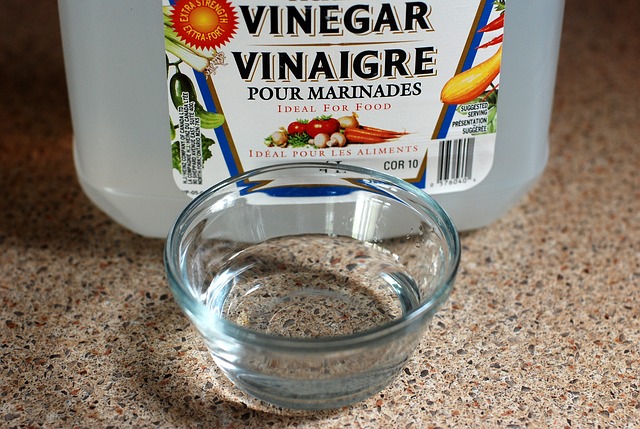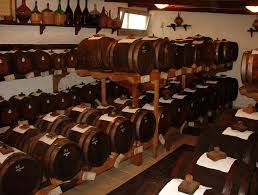What Exactly is Vinegar?

Vinegar is a staple in most households. We use it for cooking, cleaning, insect repellant and even gardening. During vegetable harvest season, some of you may be using vinegar to pickle your home grown veggies. At my house, we use it for dying Easter eggs and making salt dough volcanoes erupt. What exactly is vinegar and how is it made?
Vinegar comes from fermented liquid. Over time, when natural-occurring bacteria called acetobacters combine with oxygen in the fermented liquid, it creates acetic-acid, also known as vinegar. Some people believe that vinegar was first discovered by accident when a barrel of wine was stored too long and turned sour. In fact, the word vinegar is derived from the French word, vin aigre, which means “sour wine.”
There are many different types of vinegar. Vinegar varieties depend on what type of fermented liquid the vinegar is made from. For example, apple cider vinegar comes from fermented, pressed apples. Rice vinegar comes from rice wine. And red wine vinegar—you guessed it!—comes from red wine. The ingredients in commonly used white distilled vinegar can be more of a mystery. It depends on the brand. Heinz white distilled vinegar is made from “sun-ripened grains and crystal clear water”. The grains most often used are corn or rice.

There are hundreds of different kinds of vinegar made from all around the world. Certain types of vinegars are more popular in certain parts of the word. For example, rice vinegar, is common in China and Japan, while cane vinegar, made from sugarcane juice, is most popular in the Philippines.
One popular kind of vinegar from Italy doesn’t come from fermented liquid… let me explain. Balsamic vinegar is not like other vinegars. True balsamic vinegar comes from pressed Trebbiano grapes. The pressed grapes are boiled down until they become a thick, dark syrup. “Mother of vinegar” is added to the syrup. Mother of vinegar is a strong, aged balsamic vinegar. Over a 12 year process, the syrup is kept in wooden barrels, while microorganisms slowly turn the syrup into acetic-acid. So, in many ways, balsamic vinegar is more like a fine wine. Most of the balsamic vinegar varieties sold in stores are not true balsamic vinegar. True balsamic vinegar only comes from Reggio Emilia and Modena, Italy. The only ingredient in true balsamic vinegar is “grape must.” The bottle is labeled with Aceto Balsamico Tradizionale and carries a D.O.P. ("Denominazione di Origine Protetta") stamp. This stamp is a European certificate of authenticity. And as you might have guessed, true balsamic vinegar is expensive!

You might not be able to make your own true balsamic vinegar at home, but it is possible to make other types of vinegar at home. Check out this link on how to make your own vinegar: https://www.wikihow.com/Make-Your-Own-Vinegar.
The great thing about vinegar is that in addition to being a great flavoring for meats, veggies, and fruits, it has hundreds of other uses. One of our awesome readers sent us a link to his online article titled, 216 Mind-Blowing Ways to Use Vinegar. Did you know that seeds will germinate faster when soaked in a mixture of water and apple cider vinegar? Or that you can prevent red clothes from bleeding if you soak them in white distilled vinegar for 15 minutes before washing them? Check out his article at: https://apassion4cleaning.com/216-ways-to-use-vinegar/.
What do you like to use vinegar for? Do you have a favorite kind of vinegar? Tell me in the comments below!
- www.versatilevinegar.org
- health.howstuffworks.com
- www.foodterms.com
- www.buzzle.com
- www.huffingtonpost.com
- www.boston.com
- www.seriouseats.com
- apassion4cleaning.com
 Cristina Duke
Cristina Duke
Monthly Newsletter Contributor since 2014
Email the author! cristina@dvo.com
